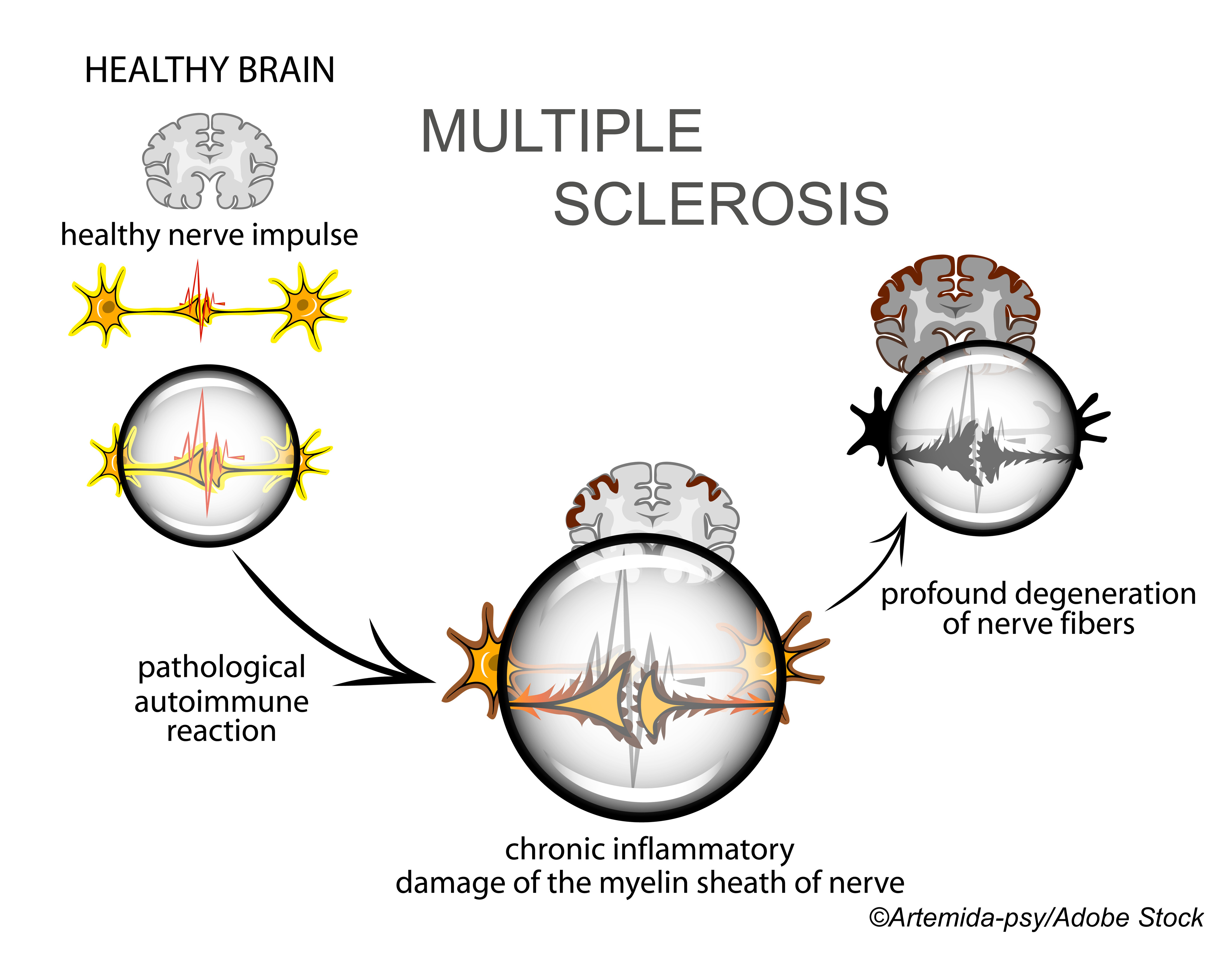Safety is always a concern for any therapeutic, so confirmation of the safety of dimethyl fumarate from an interim analysis of date from the ESTEEM study was reassuring. The findings, which were reported at CMSC and described in a BreakingMED article first published Nov. 3, 2021, are being republished as part of BreakingMED’s year-end review of clinical news from 2021. Click here to view the original article and receive CME/CE credit for this activity.
No new safety signals emerged for delayed-release dimethyl fumarate among people with relapsing remitting multiple sclerosis (MS) in data from the prospective ESTEEM study, researchers reported.
“Overall, the conclusions and the results from this interim analysis of ESTEEM indicated an acceptable safety profile and sustained efficacy of dimethyl fumarate in the real-world setting,” said Krupa Pandey, MD, of Hackensack University Medical Center in New Jersey, in a presentation at the 2021 Consortium of Multiple Sclerosis Centers meeting.
ESTEEM is a global, prospective, non-interventional study designed to evaluate the long-term safety and efficacy of dimethyl fumarate for relapsing remitting MS in routine clinical practice. The analysis included 5,084 patients with a mean age of 40 who had at least one dose of dimethyl fumarate by August 14, 2019. Most participants (74%) were women.
Patients were classified as newly diagnosed (n=1,447) if they started dimethyl fumarate within a year of diagnosis and had no prior disease-modifying therapy. Overall treatment was less than 24 months for 2,506 patients, 24-48 months for 1,898 patients, and 48 months or longer for 680 patients.
The primary endpoints included serious adverse events and events leading to dimethyl fumarate discontinuation. Any serious adverse event occurred in 245 patients (4.8%). The most common involved infection or infestation (1.3%), benign, malignant, or unspecified neoplasms (0.7%), and nervous system disorders (0.7%). Serious gastrointestinal disorders also occurred (0.5%).
Treatment discontinuation due to adverse events occurred in 965 participants (19.0%), most frequently due to gastrointestinal disorders (n=395; 7.8%). Gastrointestinal symptoms included diarrhea, nausea, abdominal pain, and vomiting. Dimethyl fumarate was also stopped due to flushing (2.6%), lymphopenia (2.5%) or leukopenia (0.4%), skin and subcutaneous tissue disorders (2.2%), and nervous system disorders (2.0%).
Patient-reported outcomes (PROs) were also collected, Pandey noted. Mean changes in PROs overall and for the newly diagnosed subgroup, respectively, at 48 months relative to baseline, were:
- MS Impact Scale (MSIS-29) for physical (overall 1.7, newly diagnosed 2.2) and psychological (overall −0.2, newly diagnosed −1.2) impact of MS.
- Modified Fatigue Impact Scale-5 (overall −0.1, newly diagnosed 0.5).
- EuroQOL-5D-5L, a quality-of-life indicator (overall −0.02, newly diagnosed −0.03).
- Work Productivity and Activity Impairment-MS for overall and newly diagnosed subgroup, respectively: absenteeism (−0.03, −0.22); presenteeism (−0.02, −0.11), work impairment (−0.04, −0.14), and activity impairment (−0.01, −0.03).
PROs were generally stable after 48 months, and on average, changes were greater among newly diagnosed patients, Pandey observed.
Dimethyl fumarate was approved by the FDA for relapsing forms of MS in 2013. Two phase III clinical trials established efficacy and safety baselines for the drug: the DEFINE trial reported a relative annualized relapse rate (ARR) reduction with respect to placebo of 48%-53%, depending on dosing regimen, and the CONFIRM trial showed relative ARR reductions of 44%-51%. Doses in both trials included dimethyl fumarate 240 mg orally twice daily and 240 mg orally three times daily. Adverse effects in the trials included flushing and gastrointestinal events and laboratory findings of elevated liver aminotransferase levels and decreased lymphocytes.
The DEFINE/CONFIRM extension study, ENDORSE, included data from three years of the trials and two additional years. The five-year analysis found adverse events reported in 88%-91% of patients treated with dimethyl fumarate according to various dosing protocols. One case of progressive multifocal leukoencephalopathy was reported in the setting of severe, prolonged lymphopenia.
In ESTEEM, 798 patients had a relapse (15.7%) during follow-up, including 224 people (15.5%) in the newly diagnosed population.
In the overall cohort, the unadjusted ARR one year prior to treatment was 0.82 (95% CI 0.80-0.84) versus 0.09 (95% CI 0.09-0.10) five years after treatment started, with an 88.6% lower ARR (P<0.0001). For newly diagnosed patients, unadjusted ARRs were 1.12 (95% CI 1.08-1.16) at one year prior to treatment and 0.10 (95% CI 0.09-0.11) five years after treatment, with a 91.3% lower ARR (P=0.0001).
The estimated probability of being without relapse overall at 48 months was 72.5% overall and 75.8% in people who were newly diagnosed.
These data provide further evidence of effectiveness of dimethyl fumarate in patients early in their MS disease course, Pandey noted. “Mean scores for PRO measures of physical and psychological disease impacts, work productivity, activity impairment, and healthcare resource utilization remain stable with longer duration of follow-up relative to baseline,” she said.
Paul Smyth, MD, Contributing Writer, BreakingMED™
This study was sponsored by Biogen.
Pandey reported consulting fees from Bristol Myers Squibb, fees from Alexion, Biogen, Bristol Myers Squibb, Genentech, and Sanofi, and research support from Genentech.
Cat ID: 130
Topic ID: 82,130,730,130,36,764,192,925




Create Post
Twitter/X Preview
Logout